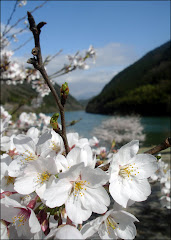When I studied in Osaka, it seemed only right that my first ketai (cell phone) mail address would be hamachan.daisuki! At that time, the comedian's popularity was at an all time high, and he was the first Japanese celebrity I actually came to know by name. He's the one who puts his arm around one of the others, resting his head on his friend's shoulder. Why? Why is he so adorable?
Since then, Japanese culture has exploded in popularity, not only in America, but around the world. First it was sushi, then Spirited Away, Samurai and Sayuri. Gwen Stefani found her muse in Harajuku, and before I knew it, Kanye West was singing Japan's praises, even subtitling his Stronger theme with katakana. And who could forget the Japanese Office skit on SNL?
Now when I mention that I've recently spent over three years living in Japan, I'm greeted by scores of "No Way! That's so freakin' cool! I've always wanted to go there! Oh my god, I so love sushi. And anime, of course." Everywhere I look I see 'new' fashion trends that were commonplace in Japan when I was in university, and almost everyday Yahoo has a Japan-related story in the headlines.
Not suprisingly, Japan continues to weave it's way into mainstream American pop, most recently with ABC's announcement of a brave new reality series: I Survived a Japanese Game Show!
Japanese games shows can be cruel.
Anyone who has had the pleasure (or misfortune) of numbing their brain with the wacky and outrageous phenomenon that is Japanese TV may have an inkling of just what these poor suckers are in for. If not, read this excerpt from the show's website:
************************************************
“I SURVIVED A JAPANESE GAME SHOW” HAS BEGUN SHOOTING FOR A HYSTERICAL PREMIERE, JUNE 24 ON ABC
“I Survived a Japanese Game Show” has begun shooting in Japan and will premiere TUESDAY, JUNE 24 (9:00-10:00 p.m., ET) on ABC. This unscripted reality/game show takes an eye-opening, behind-the-scenes look at 10 Americans – many of whom have never traveled outside the United States -- who are whisked away to Japan and compete in the ultimate Japanese game show… with hilarious results. The final winner will take home $250,000.
Guiding the American players through their stay in Japan will be host/interpreter Tony Sano (“Touch Wood,” “Beating Vegas”), an American actor fluent in Japanese; a house mother and resident pot-stirrer, Mamasan; and the witty game show host Rome Kanda (“Pink Panther,” “Saturday Night Live”), who leads the contestants through all of the zany challenges.
Some of the games/challenges will include:
WHY IS THIS FOOD SO HARD TO EAT? -- Why? Because the food is attached to the head of a teammate who must run in place on a fast-moving treadmill, while the first teammate leans over a platform and tries to eat from the moving dish.
CRAZY CRANE FINDS FLUFFY BEAR -- This takes the American arcade game to the next level, as blindfolded teammates must operate a moving crane while another teammate precariously dangles trying to collect as many stuffed animals as he/she can.
CHICKEN BUTT SCRAMBLE -- The contestants create their own version of Japanese scrambled eggs as they attempt to smash goo-filled oversized eggs with only their butts… while wearing chicken suits.
************************************************
This You Tube hit is being brought to America by FOX. Compared to the others, it's actually pretty tame.
And here's one for Abbey's Hurdlingly challenged Kyoto Sensei:

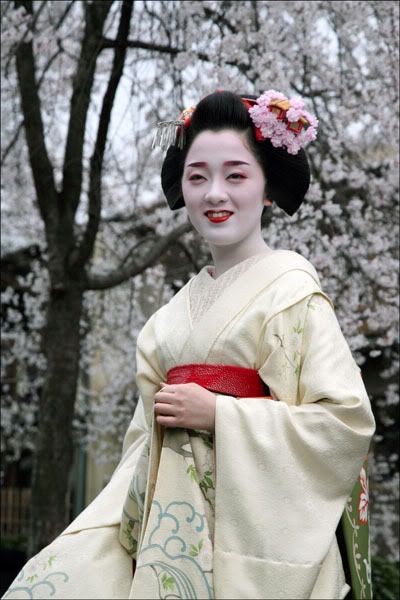
 Kotoha laughs with Takahiro as she smooths her carefully styled coiffure.
Kotoha laughs with Takahiro as she smooths her carefully styled coiffure.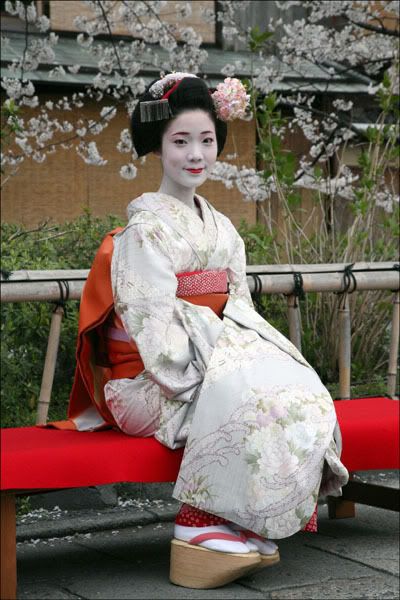

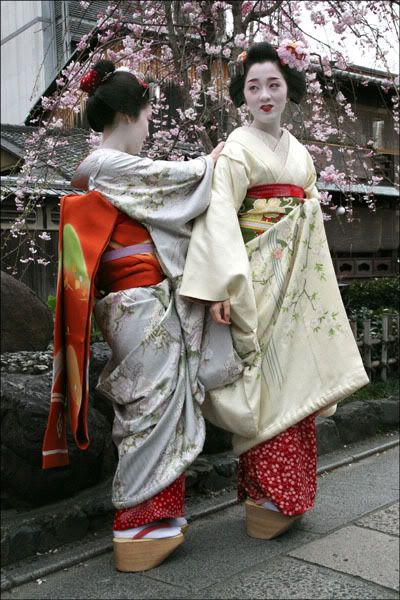

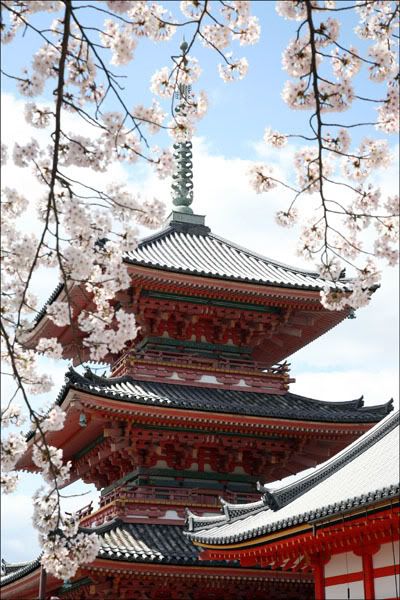
 The narrow, covered wooden entrance to the Ishibei-kouji is cleverly hidden and hard to find, if you don't know where to look. Most tourists walk right by without giving it a second glance.
The narrow, covered wooden entrance to the Ishibei-kouji is cleverly hidden and hard to find, if you don't know where to look. Most tourists walk right by without giving it a second glance. A curious couple snuck a peek up the dimly lit alley way, then turned around a left without exploring its well-kept secret.
A curious couple snuck a peek up the dimly lit alley way, then turned around a left without exploring its well-kept secret.


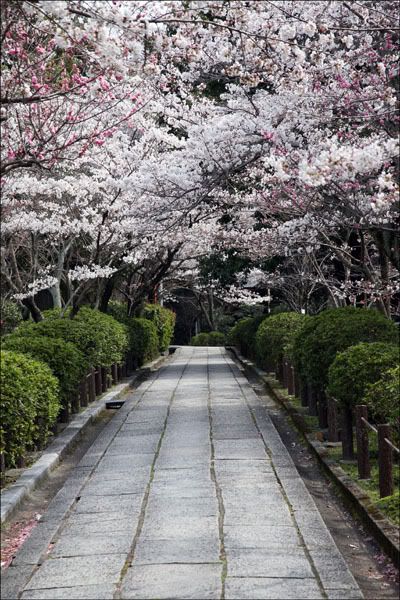
 Holding out his bowl with his eyes humbly lowered, a monk from Kiyomizu begs for alms, chanting silently along the ascent to the temple.
Holding out his bowl with his eyes humbly lowered, a monk from Kiyomizu begs for alms, chanting silently along the ascent to the temple. UNESCO World Heritage designated Kiyomizu-dera, the Temple of Pure Waters, is one of Kyoto's most popular tourist destinations.
UNESCO World Heritage designated Kiyomizu-dera, the Temple of Pure Waters, is one of Kyoto's most popular tourist destinations.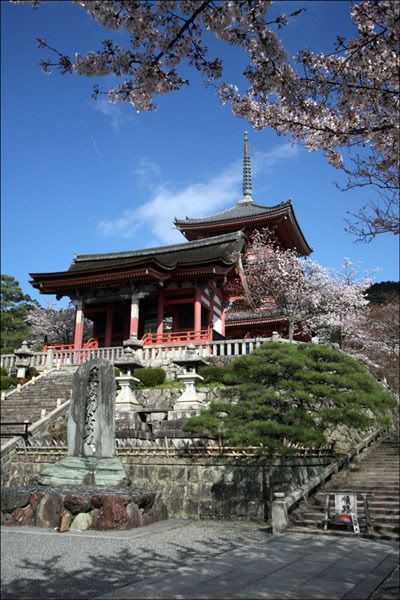
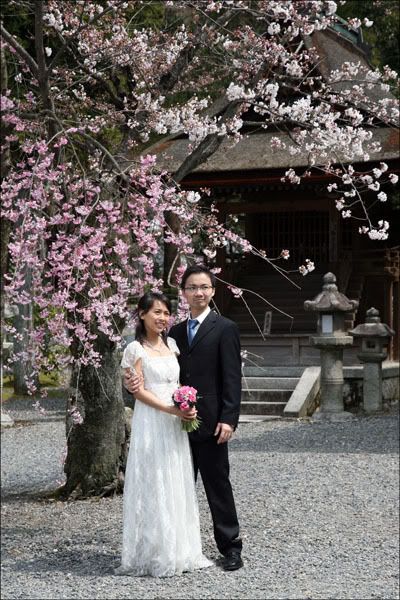
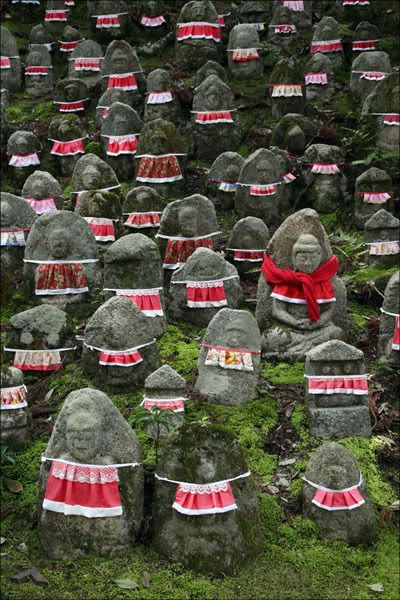
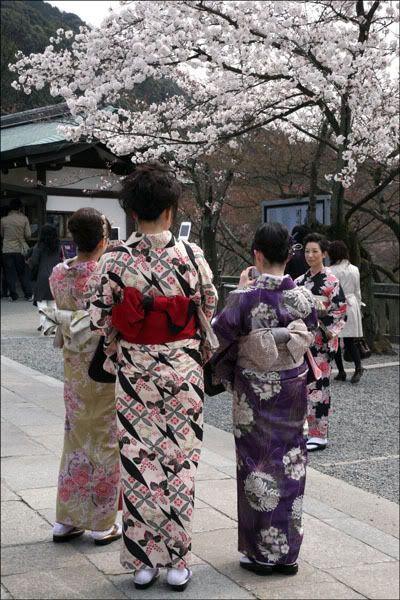
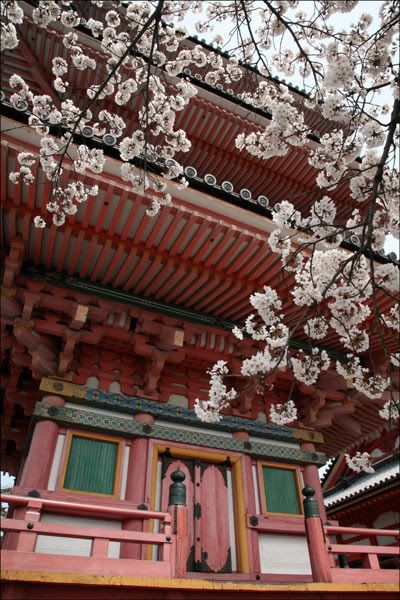

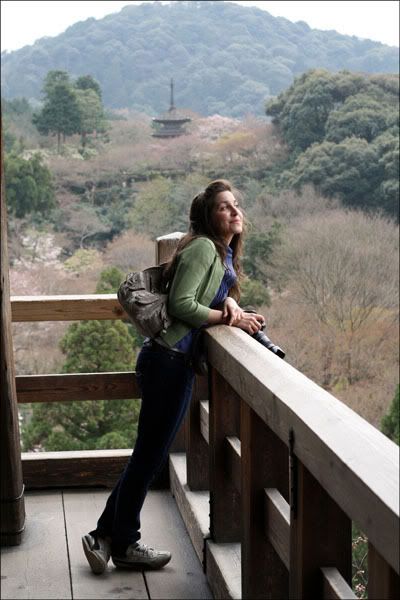

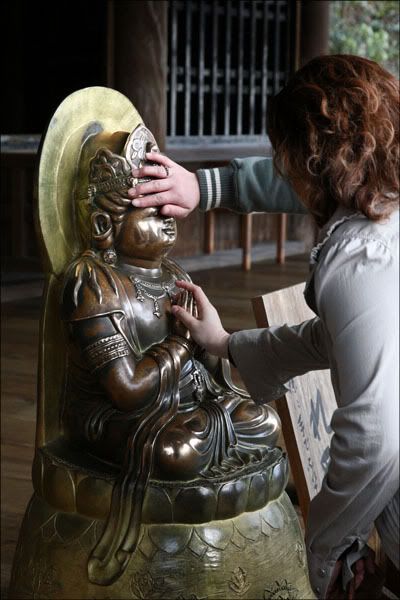

 This author of this enma, or wooden prayer plaque, is hoping for a championship showdown between my hometown Hanshin Tigers and Chunichi Dragons.
This author of this enma, or wooden prayer plaque, is hoping for a championship showdown between my hometown Hanshin Tigers and Chunichi Dragons. I'm wishing that next spring will find me back in Kyoto, surrounded by sakura.
I'm wishing that next spring will find me back in Kyoto, surrounded by sakura.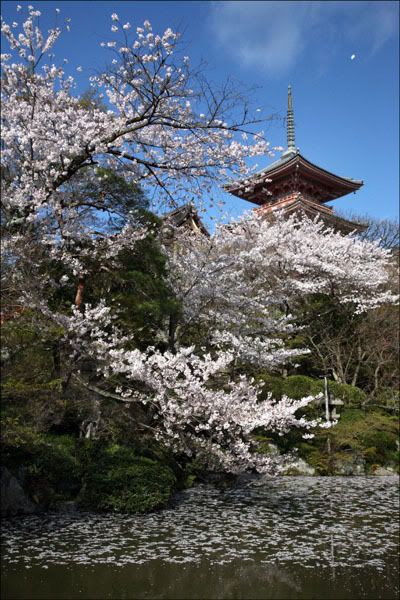
 A view of the main stage of Kiyomizu-dera, floating in clouds of sakura ( and supported by 139 timber pillars). The unique Edo period tradition of jumping off the stage in hopes that one's wishes would come true was attempted by 234 people, each documented in the temples records. Surprisingly, 85.4 percent survived! The Japanese equivalent of the English expression, "to take the plunge", is actually "to jump off the stage of Kiyomizu."
A view of the main stage of Kiyomizu-dera, floating in clouds of sakura ( and supported by 139 timber pillars). The unique Edo period tradition of jumping off the stage in hopes that one's wishes would come true was attempted by 234 people, each documented in the temples records. Surprisingly, 85.4 percent survived! The Japanese equivalent of the English expression, "to take the plunge", is actually "to jump off the stage of Kiyomizu."


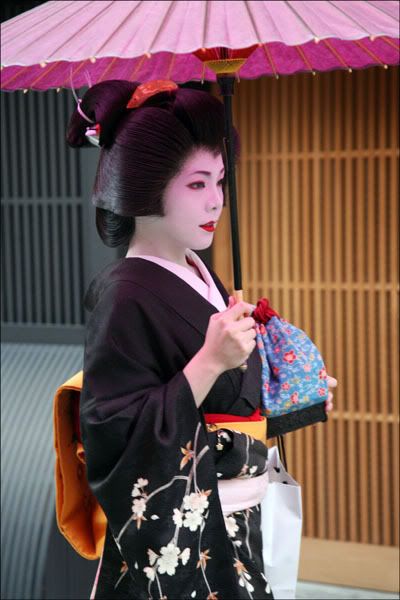
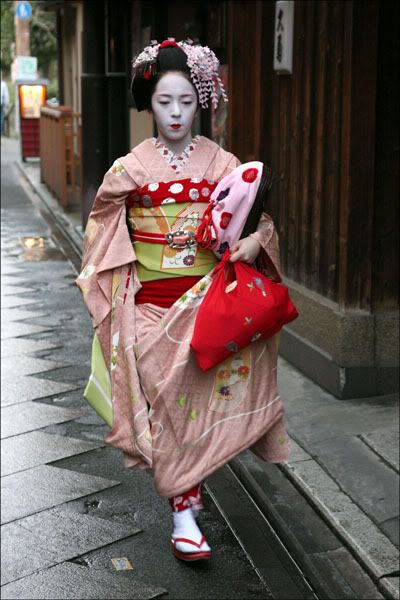

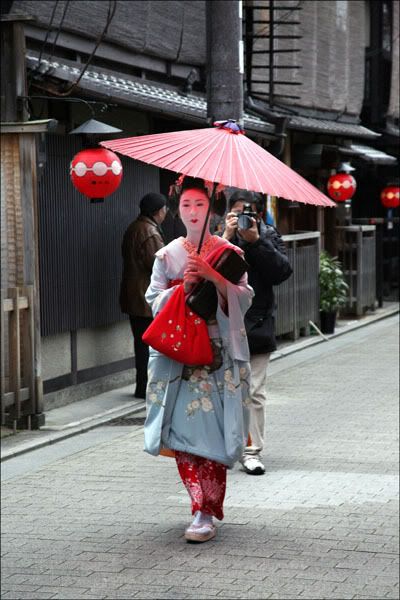
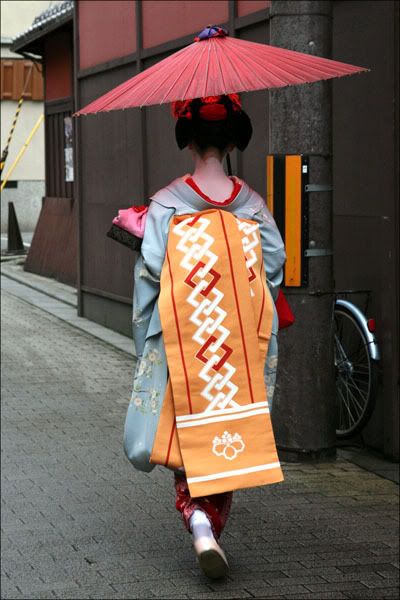
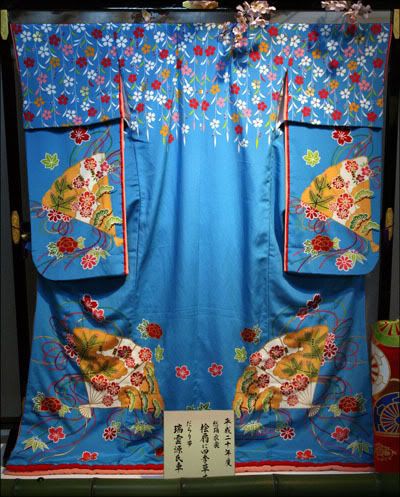

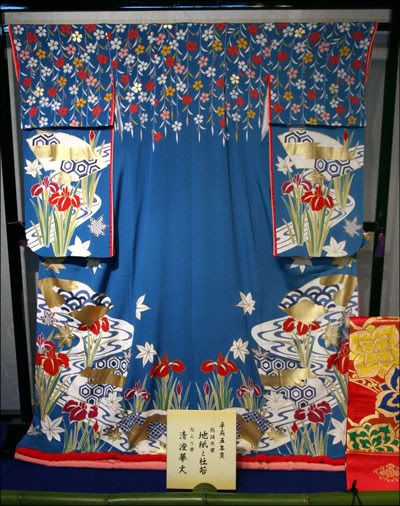
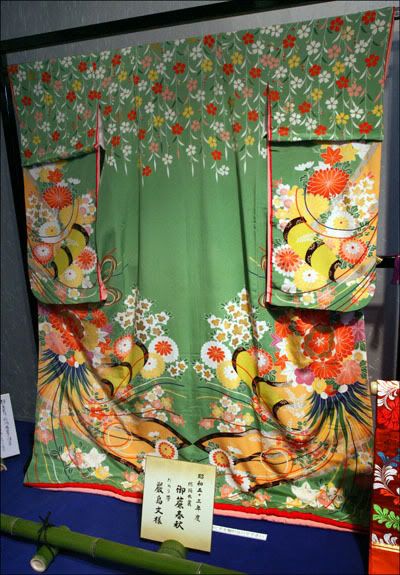
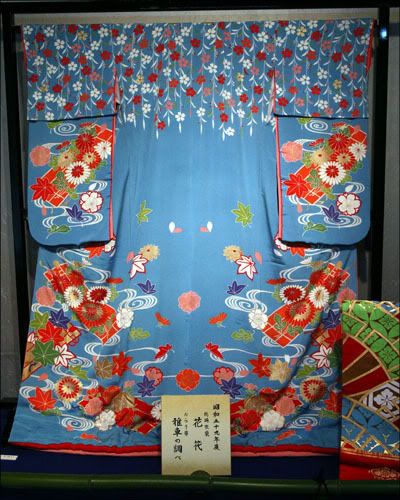

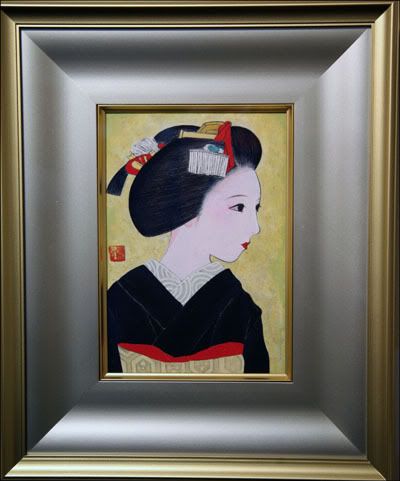
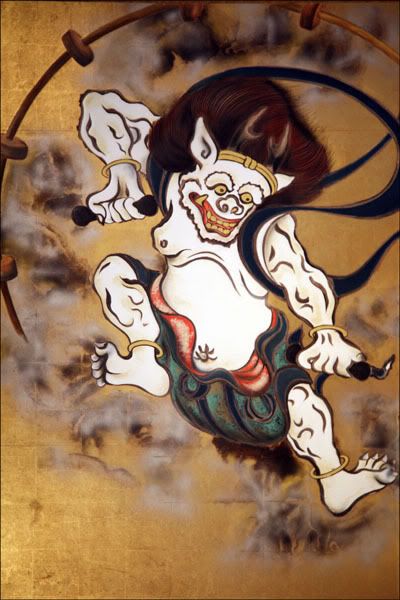

 "Wind and Thunder Gods" folding screen by Sotatsu Tawaraya, a national treasure of Japan.
"Wind and Thunder Gods" folding screen by Sotatsu Tawaraya, a national treasure of Japan.

 Two main halls embrace the inner garden with covered wooden corridors of smooth, polished wood. The repetitive, symmetrical use of simple, geometrical shapes and lines in the temple's architecture stands in stark contrast to the lush, seemingly chaotic landscape of the garden.
Two main halls embrace the inner garden with covered wooden corridors of smooth, polished wood. The repetitive, symmetrical use of simple, geometrical shapes and lines in the temple's architecture stands in stark contrast to the lush, seemingly chaotic landscape of the garden.


